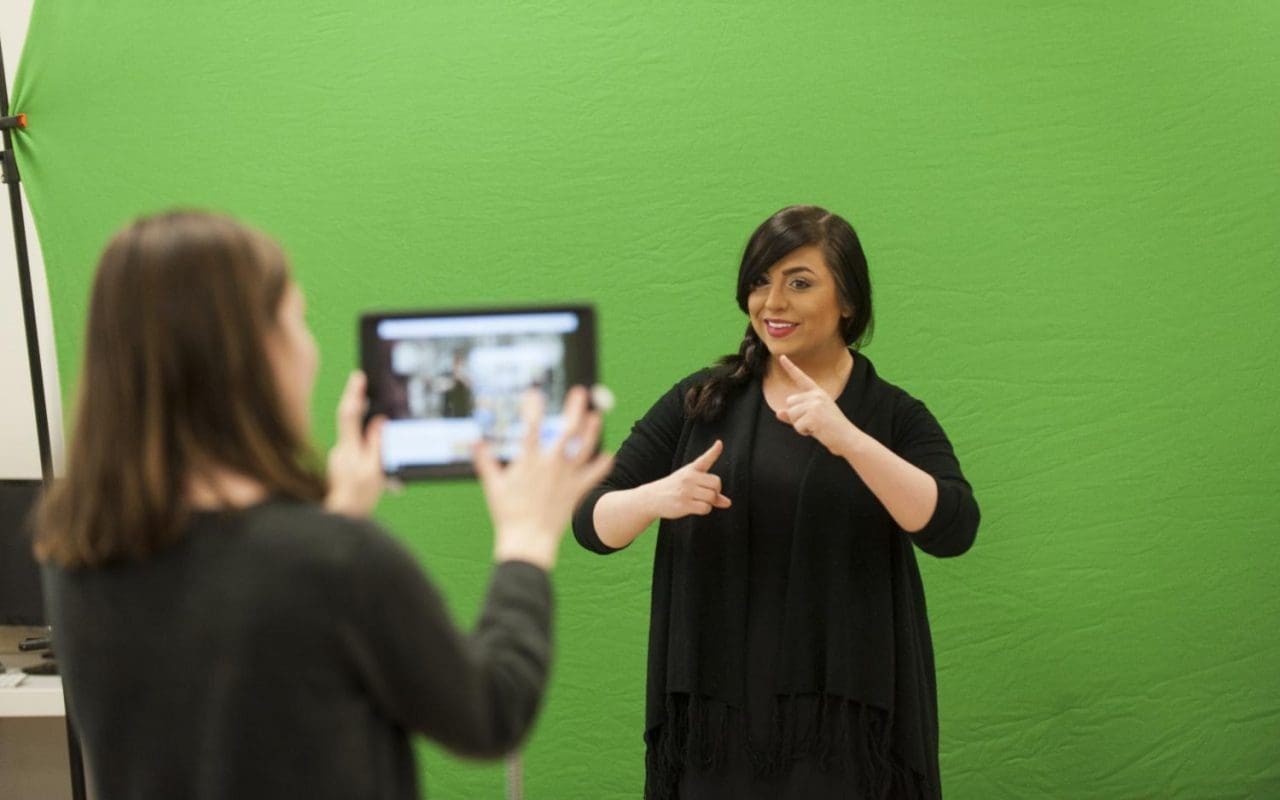
The instructions were simple. Claudia Pagliaro’s students had to create a language-based project for their future deaf and hard of hearing students using the UNCG School of Education’s SELF Design Studio.
The students didn’t receive much direction, but that was the point.
“I want them to go into the SELF Design Studio and try things. I want them to see what it has to offer,” Pagliaro said.
The results were stunning. From art to virtual reality to interactive video, each group of students came up with unique ways to teach their future students.
“My students took the project and ran in different directions – that’s what I wanted,” she said. “I want to foster creativity. They’re going to be teaching deaf and hard of hearing kids. You have to have projects that match the students where they are.”
The SELF Design Studio encourages students to look at an initial idea for a project and see how they can use technology to make it new, said Matthew Fisher, assistant director of the studio. “We help match up projects with the right tools.”
When students first visit the SELF Design Studio, they learn how to use its tools, such as the 3-D printer and laser engraver. Fisher and other studio employees also teach them about different mobile applications, programs and tools they can access. Then, the students are given free rein to use those tools.
“The SELF Design Studio allows them to combine high tech and low tech together to create a teacher-mind that thinks forward,” Pagliaro said.
For this particular assignment, one group used Google Forms, a green screen and an iPad and created their own website to build an interactive, “choose your own adventure” video. The project intermingled an engaging Civil War history lesson along with American Sign Language (ASL) vocabulary words.
Another group used the Aurasma, a virtual reality app, to share ASL poetry, and a third group used the SELF Design Studio’s laser engraver to create a mobile to go along with the popular children’s book, “If You Take a Mouse to School.” At the end of each string was a piece of wood engraved with a QR code leading to a website with the vocabulary word, its part of speech and definition, as well as a video of its sign.
Deaf education comes with a special set of challenges and opportunities, and these projects allowed Pagliaro’s students to approach instruction with students who are deaf or hard of hearing in new ways.
“There’s an entire group of kids that fall through the cracks,” said Courtney Dempsey, one of Pagliaro’s students, adding that many teachers aren’t trained to teach children who are deaf or hard of hearing children.
“At the end of the day, hearing or not, they’re still students. Deaf children are entitled to education and success. It just takes a different route to teach them,” said classmate Shameeka Wilson.
Working on an interactive project for future students with new technology in the SELF Design Studio gave the students a “sense of accomplishment,” she added. “There’s nothing you can’t create.”
Story by Jeanie Groh, University Relations
Photography by Brian Spiece, Intern